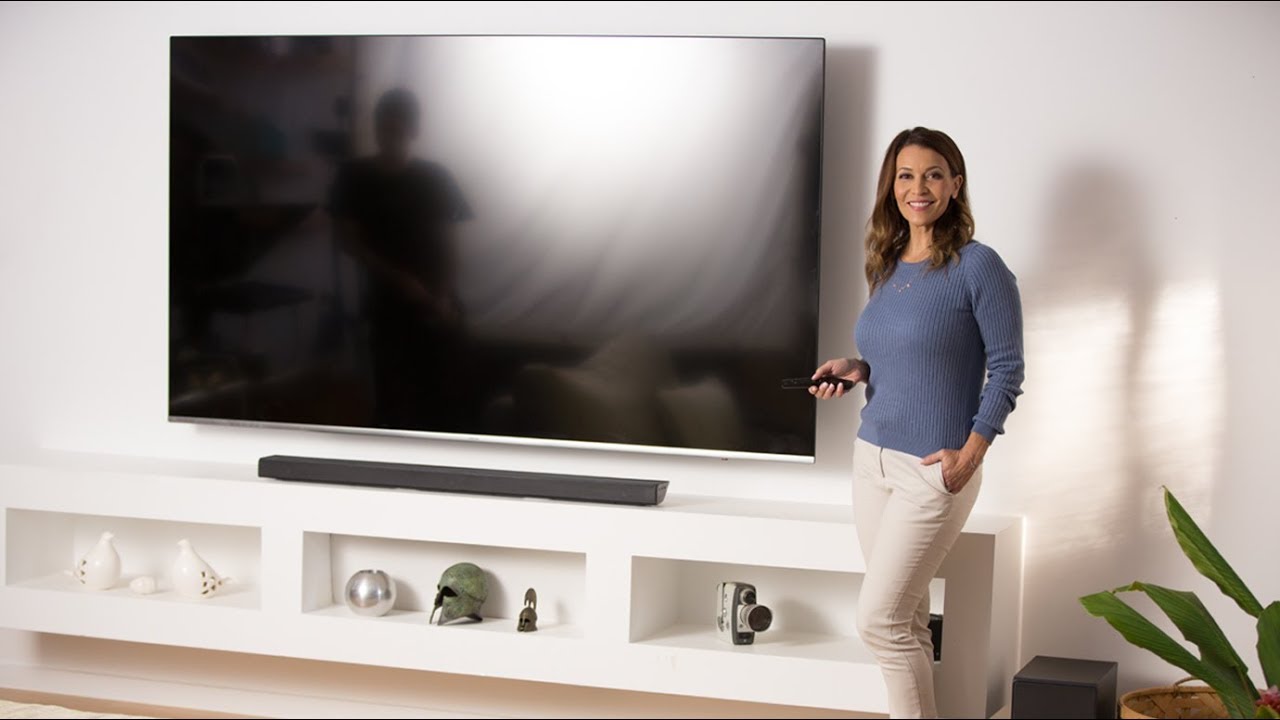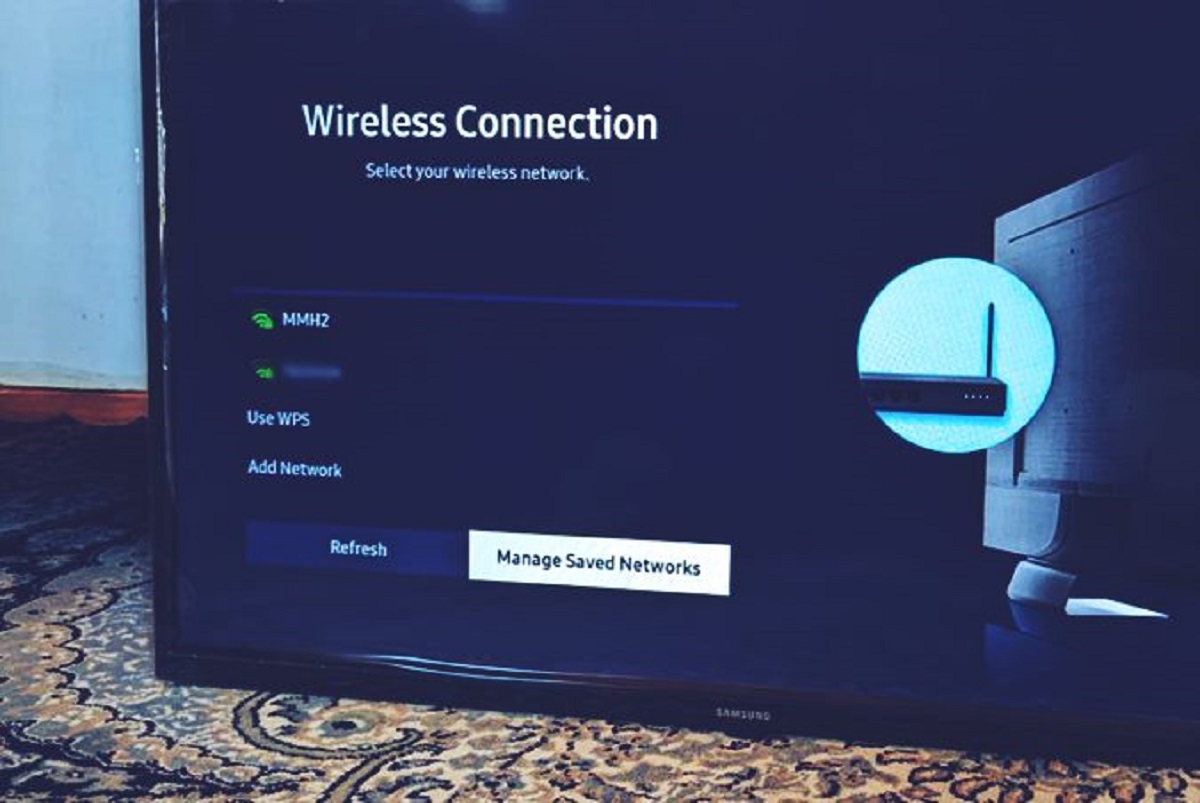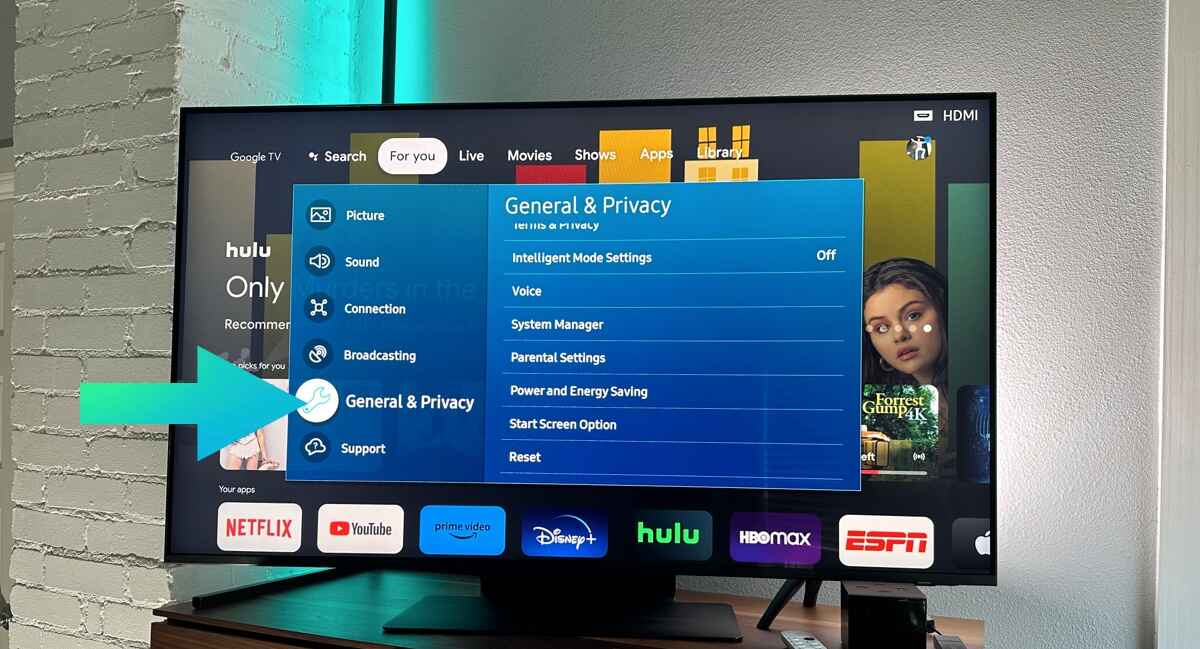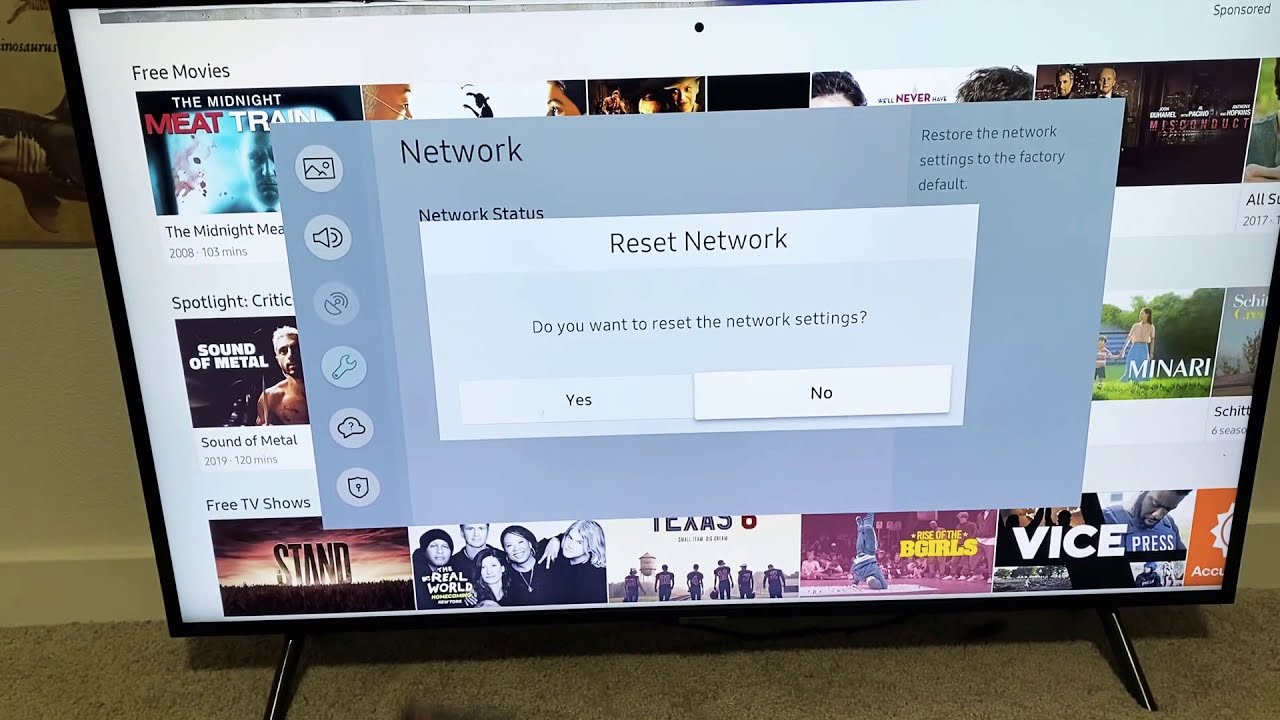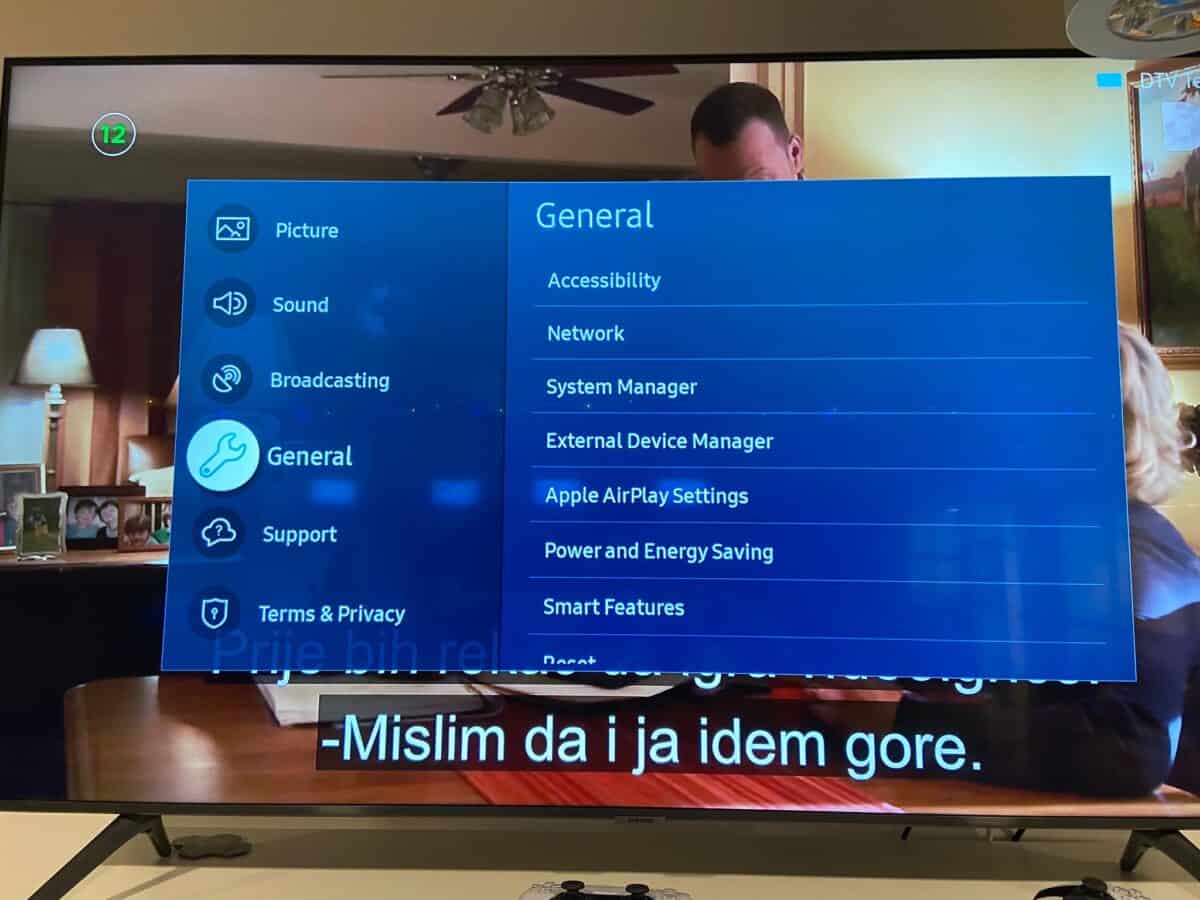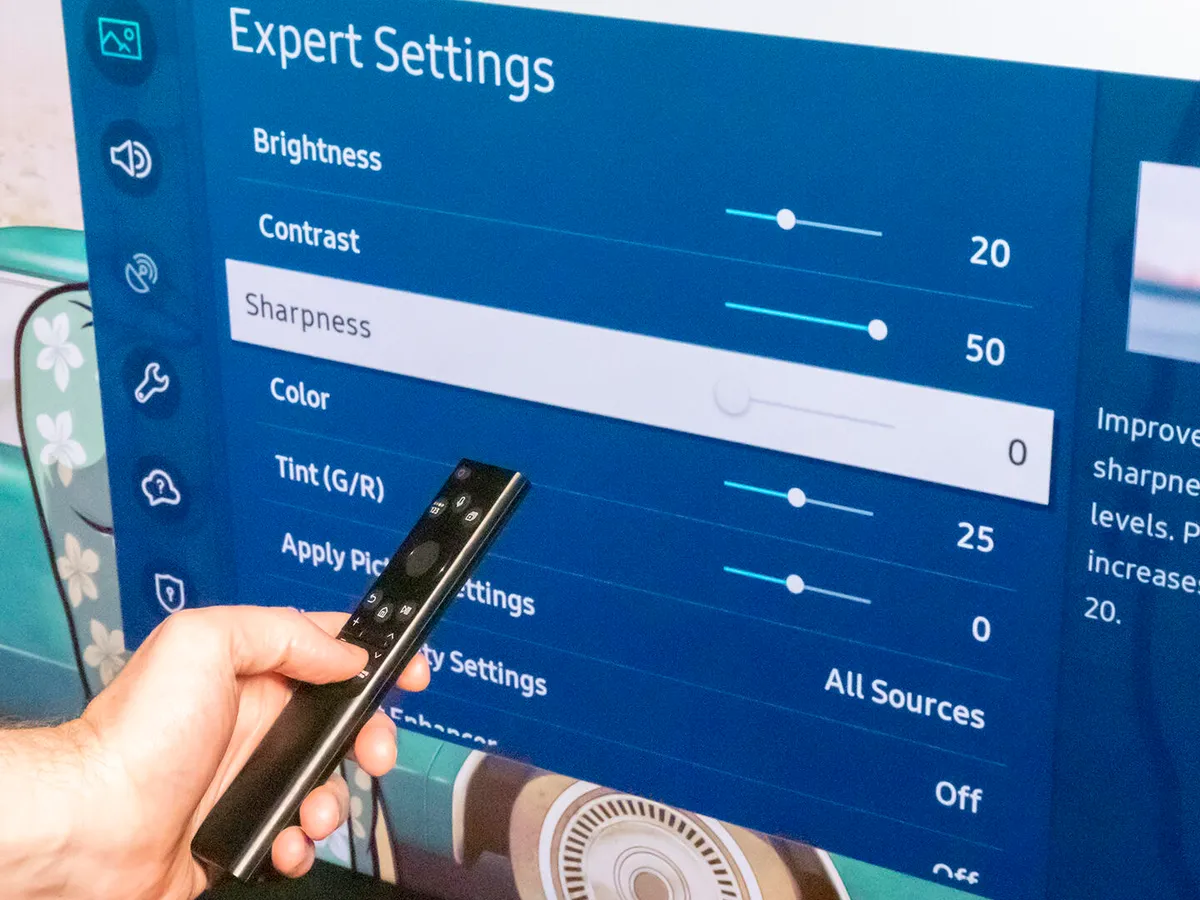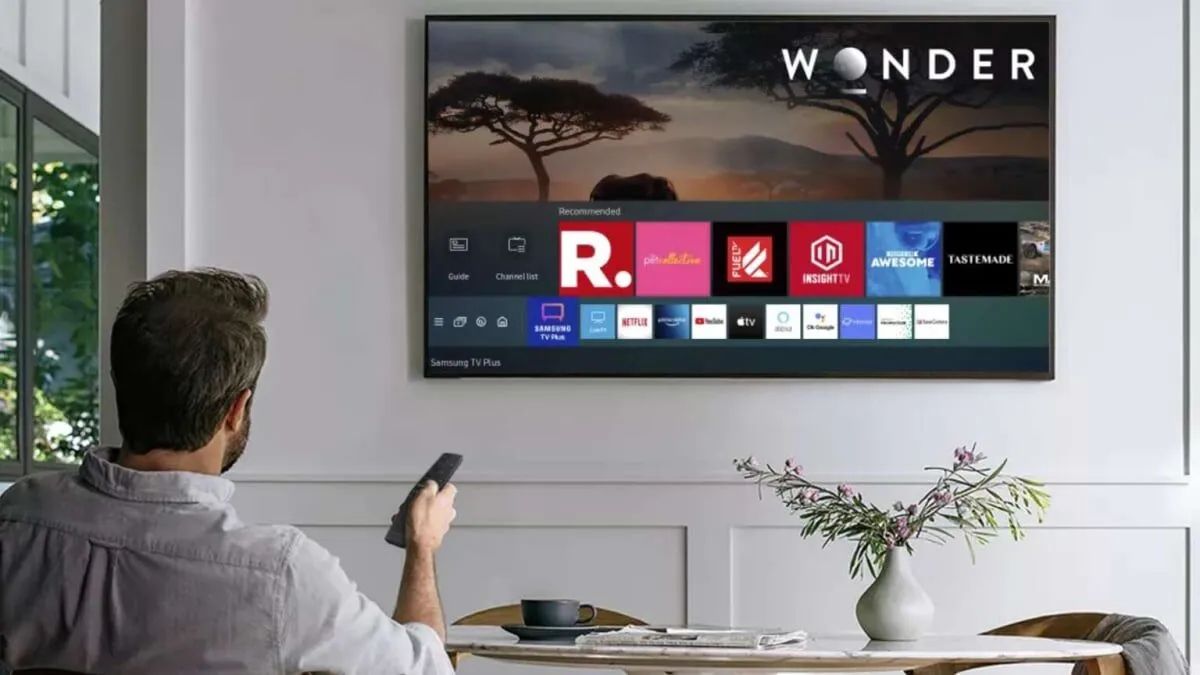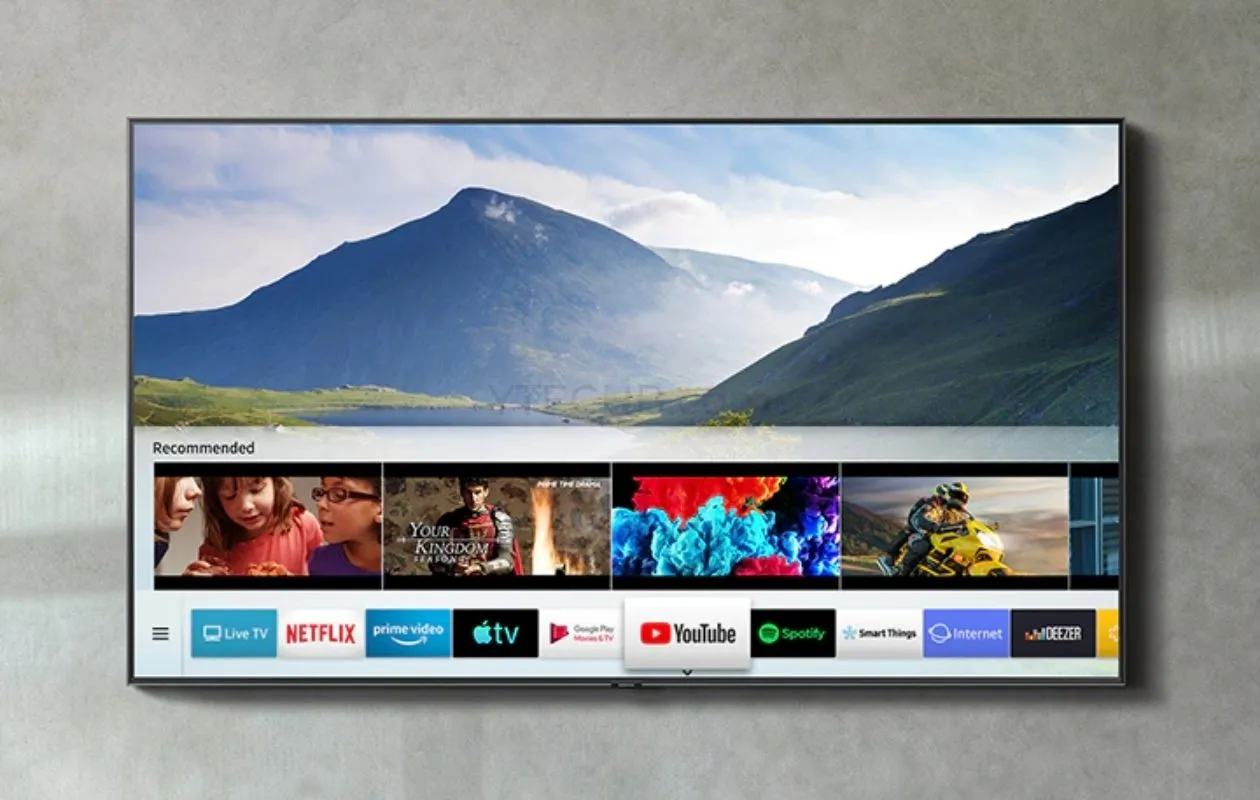Possible Reasons Your Samsung Smart TV Won’t Turn On
It can be frustrating when your Samsung Smart TV refuses to turn on, especially when you’re looking forward to watching your favorite shows or movies. There could be several reasons why this happens, ranging from power issues to software glitches. In this section, we will explore some of the possible reasons for your TV’s refusal to power up.
1. Power Issues: The most common reason for a TV not turning on is a power issue. Make sure that the power cord is securely plugged into both the TV and the power outlet. Check if the power outlet is functioning by plugging in another device. Additionally, ensure that there are no power outages or interruptions in your area.
2. Remote Control Problems: If your TV doesn’t respond to the remote control, it could indicate a problem with the remote. Replace the batteries and try again. If that doesn’t work, try using the TV’s built-in buttons to turn it on.
3. Software Glitches: Sometimes, software glitches can prevent the TV from turning on. This can occur due to interrupted updates or corrupted software. To resolve this, try performing a soft reset by unplugging the TV from the power source for a few minutes, then plugging it back in and powering it on.
4. Hardware Malfunctions: Faulty hardware components can also cause the TV to refuse to turn on. This can include issues with the power supply, circuit boards, or other internal components. In such cases, it’s best to contact a professional technician to diagnose and repair the problem.
5. Faulty Power Supply: If the power supply unit is damaged or defective, it can prevent the TV from powering on. Consider checking the power supply unit or contacting a technician to inspect it.
6. Overheating: TVs are prone to overheating, especially if they are placed in enclosed spaces or have poor ventilation. When a TV overheats, it may shut down to protect itself from further damage. Ensure that your TV has enough space for ventilation and that the vents are clean and free from dust.
7. Network Connection Problems: If your TV relies on an internet connection to function, network connection issues can prevent it from turning on. Check your network settings and ensure that your internet connection is stable.
8. Problems with HDMI or AV Input: Faulty HDMI or AV connections can cause the TV to not display anything, making it seem like it’s not turning on. Verify that the connections between the TV and external devices are secure and that the correct input source is selected.
9. Issues with Smart Hub or Apps: If the TV gets stuck on the Smart Hub screen or doesn’t respond when launching apps, it could indicate a problem with the TV’s software or app compatibility. Try resetting the Smart Hub or updating the apps to fix the issue.
10. Firmware Update Required: In some cases, your TV may require a firmware update to fix bugs or compatibility issues. Check the Samsung support website for any available updates and follow the instructions to install them.
If your Samsung Smart TV still won’t turn on after trying these troubleshooting steps, it may be necessary to contact Samsung support for further assistance. They can provide specific guidance based on your TV model and help resolve any underlying issues.
Remember, each TV model can have different features and troubleshooting methods, so refer to your TV’s user manual or online resources for model-specific guidance.
Power Issues
One of the most common reasons for a Samsung Smart TV not turning on is related to power issues. It’s important to check several aspects to ensure that the power supply is not the culprit behind your TV’s refusal to power up. Here are a few steps you can take to address this problem:
Firstly, check whether the power cord is securely plugged into both the TV and the power outlet. Sometimes, a loose connection can prevent the TV from receiving power. Make sure the power cord is firmly inserted into both ends and verify that there are no visible signs of damage to the cord itself.
If you have confirmed that the cord is properly connected, double-check the power outlet. Ensure that it is functioning by plugging in another device, such as a lamp or phone charger, to verify that it is providing power. If the outlet doesn’t work, try using a different one. Additionally, consider using a surge protector to protect against power fluctuations.
Next, check that there are no power outages or interruptions in your area. Sometimes, external factors can affect the power supply to your TV. Contact your local electricity provider to verify if there are any known power issues in your vicinity.
If you have ruled out external power problems, it may be helpful to perform a power cycle on your Smart TV. To do this, unplug the TV from the power source and wait for at least one minute. Then, plug it back in and attempt to turn it on again. This simple reset can often resolve minor power-related issues.
In some cases, power issues can be caused by a faulty power supply unit within the TV. If you suspect this might be the case, it’s recommended to contact a professional technician to diagnose and repair the problem. They will have the expertise and tools required to identify and fix any issues with the power supply unit.
Remember, always exercise caution when dealing with electrical devices. If you are uncertain about any of the steps mentioned or if you are not comfortable performing them yourself, it’s always best to seek professional assistance to avoid any potential risks or further damage to your TV.
Remote Control Problems
If your Samsung Smart TV doesn’t respond when you try to turn it on using the remote control, the issue might lie with the remote itself. Here are a few troubleshooting steps to resolve remote control problems:
Firstly, check the batteries in the remote control. Weak or dead batteries can prevent the remote from sending signals to the TV. Replace the batteries with fresh ones and try turning on the TV again. Make sure to insert the batteries properly according to the polarity indicated.
If replacing the batteries doesn’t solve the issue, you can also try resetting the remote control. Remove the batteries from the remote and press every button on the remote at least once to discharge any remaining power. Leave the remote without batteries for a few minutes and then reinsert them. Now, try using the remote control to turn on the TV.
If the above steps don’t work, ensure that there are no obstructions between the remote control and the TV. Furniture, other electronic devices, or thick walls can interfere with the remote signals. Move closer to the TV, point the remote directly at it, and try again.
If your TV has physical buttons on the unit itself, try using them to turn on the TV. If the TV turns on using the buttons but not the remote, it could indicate a problem with the remote control. In this case, you may need to replace the remote or consider using a universal remote compatible with your Samsung Smart TV.
If none of the above steps resolve the remote control issues, there could be a problem with the infrared sensor on the TV. The infrared sensor receives signals from the remote control, and if it is faulty, it won’t be able to register any commands. Contact Samsung support or a professional technician to get further assistance and potentially arrange for a repair.
Remember to point the remote control directly at the TV and ensure that you are within the recommended distance for optimal operation. Also, clean the remote control periodically, as dirt and debris can interfere with the device’s performance.
Software Glitches
Software glitches can sometimes cause a Samsung Smart TV to refuse to turn on. These glitches can occur due to interrupted updates, corrupted software, or other issues. If you suspect that a software problem is preventing your TV from powering up, try the following troubleshooting steps:
Firstly, perform a soft reset by unplugging the TV from the power source. Leave it unplugged for a few minutes, then plug it back in and try turning it on. This simple reset can often resolve minor software glitches and allow the TV to start up properly.
If the soft reset doesn’t work, you can also try a factory reset to restore the TV’s software to its default settings. However, note that a factory reset will erase all settings and personalization, so it’s important to back up any important data or settings before proceeding. The specific steps to perform a factory reset can vary depending on your TV model, so refer to the user manual or the manufacturer’s website for detailed instructions.
Another option is to update the TV’s firmware. Manufacturers regularly release firmware updates to address bugs, improve compatibility, and add new features. Check the Samsung support website for any available firmware updates for your TV model. Follow the provided instructions to download and install the update. Keep in mind that firmware updates can take some time, so be patient and follow the process carefully.
In some cases, a specific app or feature may be causing the software glitch. Try removing or disabling any recently installed apps or disabling specific features one by one to identify the culprit. If the TV turns on without the problematic app or feature, you may need to contact the app developer or the TV manufacturer’s support team for further assistance.
If you have exhausted all software troubleshooting options and the TV still won’t turn on, it might be necessary to contact Samsung support or a professional technician. They can provide specific guidance based on your TV model and assist in further diagnosing and resolving any underlying software issues.
Remember to always ensure that you are following the correct instructions for your TV model and that any software updates or resets are performed with caution to avoid any unintended consequences.
Hardware Malfunctions
When your Samsung Smart TV refuses to turn on, a possible cause could be a hardware malfunction. Issues with hardware components within the TV can prevent it from powering up properly. Here are a few steps you can take to address potential hardware problems:
If you suspect a hardware malfunction, it’s advisable to contact a professional technician. They have the expertise and specialized tools required to diagnose and repair hardware issues. Attempting to fix hardware problems yourself may lead to further damage or void the warranty.
One common hardware component that can cause problems is the power supply unit (PSU). The PSU is responsible for providing power to the TV’s internal components. If the power supply unit is faulty or damaged, it can prevent the TV from turning on. In such cases, contacting a professional technician is recommended for proper diagnosis and repair.
Another potential cause of hardware malfunctions is issues with the circuit boards or other internal components. These components can become damaged over time due to various factors, such as power surges or regular wear and tear. If you suspect an internal hardware issue, it’s best to seek professional assistance to resolve the problem.
In some cases, hardware malfunctions can also manifest as visual signs of damage, such as bulging capacitors or burnt-out components. If you notice any visible damage, it’s crucial to contact a professional technician immediately and refrain from attempting any repairs yourself.
Regular maintenance and cleaning can help prevent hardware malfunctions. Ensure that your TV is adequately ventilated and free from dust and debris. Overheating can put strain on internal components, leading to hardware issues. Clean the vents and ensure proper airflow around the TV.
It’s important to note that each TV model can have different hardware components, and troubleshooting these issues may require specialized knowledge and equipment. Contacting Samsung support or a professional technician will help ensure that the hardware malfunctions are diagnosed and repaired accurately.
Remember, attempting to fix hardware problems yourself can be risky and may cause further damage to your TV. It’s always best to rely on experts for hardware-related issues to avoid any potential complications.
Faulty Power Supply
A faulty power supply can be a common reason why a Samsung Smart TV won’t turn on. The power supply unit (PSU) is responsible for providing the necessary power to the TV’s internal components. If the PSU is faulty or damaged, it can prevent the TV from powering up. Here are some steps you can take to address a faulty power supply:
Firstly, check the power cable and ensure that it is securely connected to both the TV and the power outlet. Sometimes, a loose connection can disrupt the power supply. Ensure that the power cable is firmly inserted and that there are no visible signs of damage.
If the power cable appears to be in good condition, try using a different power outlet. Occasionally, power outlets can become faulty and may not provide the required power to the TV. Plug the power cable into a different outlet and see if the TV turns on. If it does, then the original outlet might need to be examined or repaired.
Another troubleshooting step is to use a different power cable. If you have a spare power cable or can borrow one from another device that uses a similar cable, try connecting it to your TV. This can help determine whether the original power cable is faulty or not. If the TV turns on with the new power cable, replacing the old cable should solve the problem.
In some cases, the power supply unit within the TV may require professional attention. If you suspect a faulty power supply unit, it’s recommended to contact Samsung support or a professional technician for assistance. They have the expertise and specialized tools needed to diagnose and repair issues with the power supply unit.
Keep in mind that attempting to repair or replace the power supply unit yourself can be risky and may void the TV’s warranty. It’s always best to rely on professionals for addressing faulty power supply issues to ensure proper diagnosis and repair.
Regular maintenance and cleaning can help prevent power supply issues. Ensure that the TV is placed in a well-ventilated area and that the air vents are free from dust and debris. Overheating can put strain on the power supply unit, leading to potential malfunctions. Clean the vents periodically to ensure proper airflow.
If you have ruled out power supply issues and the TV still won’t turn on, there may be other underlying hardware or software problems. Consider exploring other sections of this guide or contacting Samsung support or a professional technician for further assistance.
Overheating
Overheating can be a common issue that prevents a Samsung Smart TV from turning on. When a TV overheats, it can go into protection mode and refuse to power up to prevent further damage. Here’s what you can do if you suspect overheating is the cause:
Firstly, check the location of your TV. Make sure it is placed in a well-ventilated area and that there is enough space around it for airflow. Avoid placing the TV in enclosed cabinets or tight spaces that can restrict airflow and trap heat. Good ventilation is essential to prevent overheating.
Next, examine the air vents on the TV. Over time, dust and debris can accumulate, blocking the vents and inhibiting proper airflow. Use a soft brush or a vacuum cleaner with a brush attachment to gently clean the vents. Be careful not to damage any delicate components while doing so.
If the TV has a built-in fan, ensure that it is working properly. Some Samsung Smart TVs have fans that help regulate the temperature. If you notice that the fan is not functioning or making strange noises, it may be necessary to contact Samsung support or a professional technician to have it repaired or replaced.
Consider the ambient temperature in the room where the TV is located. Extremely high temperatures can make it challenging for the TV to dissipate heat efficiently. If the room temperature is consistently high, try using a fan or air conditioner to cool down the room and provide better conditions for the TV.
Additionally, avoid placing other electronic devices on top of or near the TV. Electronics generate heat, and if they are too close to the TV, it can contribute to overheating. Maintain a distance between the TV and other devices to prevent excessive heat accumulation.
If you’ve taken the above steps to address overheating concerns and the TV still won’t turn on, it may be necessary to contact Samsung support or a professional technician for further assistance. They can help determine if there are any underlying issues contributing to the overheating problem and provide appropriate solutions.
Remember, regular maintenance, proper ventilation, and keeping the TV in a cool environment are essential to prevent overheating. Taking these precautions can prolong the life of your TV and ensure it operates optimally.
Network Connection Problems
If your Samsung Smart TV relies on an internet connection to function, network connection problems can prevent it from turning on. Here are some troubleshooting steps to address network connection issues:
Firstly, check your Wi-Fi router to ensure it is functioning correctly. Make sure that the Wi-Fi network is active and that other devices can connect to it. Restarting the router may resolve temporary network issues. Unplug the router from the power source, wait for a few seconds, and then plug it back in. Allow the router to reboot fully before attempting to turn on the TV again.
If possible, try connecting the TV to the router via an Ethernet cable. This can help determine if the network issue is related to Wi-Fi connectivity. If the TV turns on and functions properly with a wired connection, then the problem may be with the Wi-Fi signal or the TV’s Wi-Fi adapter. Consider seeking assistance from your internet service provider (ISP) to troubleshoot Wi-Fi connectivity problems or contacting Samsung support for further guidance.
Ensure that the Wi-Fi network name (SSID) and password are correctly entered on the TV. Incorrect credentials can prevent the TV from connecting to the network. Double-check the network settings on the TV and verify that the SSID and password are accurate. If necessary, re-enter the correct information and try to turn on the TV again.
If you have recently changed your Wi-Fi network’s settings or replaced your router, make sure to update the network settings on your TV accordingly. Navigate to the network settings on the TV and select the new network or manually enter the new SSID and password.
Interference from other electronic devices can also disrupt the Wi-Fi signal and cause network connectivity problems. Keep the TV away from devices such as cordless phones, microwave ovens, and baby monitors, as they can interfere with the Wi-Fi signal. Additionally, check if there are any other wireless devices in close proximity that could be causing signal interference.
Try connecting other devices, such as smartphones or laptops, to the same Wi-Fi network to determine if the network itself is functioning properly. If other devices can connect without any issues, it suggests that the problem may be specific to the TV’s network settings or Wi-Fi adapter.
If none of the above steps resolve the network connection problems, consider resetting the TV’s network settings. This will remove any saved Wi-Fi networks and force you to set up the connection from scratch. Consult the TV’s user manual or the manufacturer’s website for instructions on how to perform a network reset.
If you are still experiencing network connection issues after trying these troubleshooting steps, contacting Samsung support or your ISP for further assistance is recommended. They can provide specific guidance based on your TV model and help resolve any underlying network connectivity problems.
Problems with HDMI or AV Input
If your Samsung Smart TV is not turning on, it’s worth checking for problems related to the HDMI or AV input. Issues with these inputs can prevent the TV from displaying any content, making it appear as if the TV is not turning on. Here are some troubleshooting steps to address potential HDMI or AV input problems:
Firstly, verify that the HDMI or AV cables are properly connected to both the TV and the external device. Ensure that the connections are secure and that you have selected the correct input source on the TV. Use the TV’s remote control or the buttons on the TV itself to cycle through the available input sources until you find the correct one.
If you are using an HDMI cable, try using a different HDMI port on the TV. Occasionally, a specific HDMI port may have issues. Plugging the cable into a different port can help determine if the problem lies with the port itself.
Inspect the HDMI or AV cables for any signs of damage. A damaged cable, such as a frayed or bent connector, can cause connectivity issues. If you notice any damage, try using a new cable to connect the TV to the external device and see if that resolves the problem.
Ensure that the external device, such as a cable box or Blu-ray player, is powered on and functioning correctly. Sometimes, the TV may not receive a signal if the external device is turned off or experiencing its own technical difficulties. Power cycle the external device by unplugging it from the power source, waiting a few seconds, and plugging it back in.
If you are using an HDMI switch or an AV receiver to connect multiple devices to the TV, confirm that it is working correctly. Connect the external device directly to the TV to determine if the switch or receiver is causing any issues. If the TV turns on and displays content without the switch or receiver in the setup, it suggests a problem with those devices.
Try connecting a different external device, such as a game console or DVD player, to the TV using the same HDMI or AV input. If the TV turns on and works with the new device, it indicates that the issue lies with the original external device.
If the HDMI or AV input problem persists, it may be necessary to reset the TV to its factory settings. This will restore the default settings and may help resolve any software-related issues. However, keep in mind that a factory reset will erase all saved settings and personalization, so make sure to back up any important data before proceeding.
If none of the above steps resolve the HDMI or AV input problems, there could be an underlying hardware issue. In such cases, it’s best to contact Samsung support or a professional technician for further assistance.
Remember to handle the cables and connections with care to avoid any potential damage. Troubleshooting the HDMI or AV input can be a process of elimination, so be patient and methodical in your approach.
Issues with Smart Hub or Apps
If your Samsung Smart TV is not turning on, there may be issues with the Smart Hub or apps that are causing the problem. The Smart Hub is the interface that allows you to access and navigate various apps and features on your TV. Here are some troubleshooting steps to address these issues:
Firstly, try restarting the Smart Hub. This can be done by pressing the Home button on your TV remote control and navigating to the Smart Hub option. From there, access the settings and look for the option to restart or reset the Smart Hub. This process will refresh the Smart Hub and may resolve any temporary glitches.
If restarting the Smart Hub doesn’t work, check your internet connection. Poor or unstable internet connectivity can affect the Smart Hub’s performance. Ensure that your TV is connected to a stable internet connection. Restart your router and modem, or try connecting to a different network to test the Smart Hub’s functionality.
Updating the Smart Hub or individual apps is another troubleshooting step to try. Outdated software can lead to compatibility issues or glitches. Check for any available updates by accessing the Smart Hub settings or the TV’s settings menu. If updates are available, follow the instructions to install them and then attempt to turn on the TV again.
If you are experiencing issues with a specific app, try deleting and reinstalling it. This can help resolve any issues with the app itself. Go to the Smart Hub’s app management settings and uninstall the troublesome app. Then, visit the app store on the TV and reinstall the app to see if that resolves the problem.
Factory resetting the Smart Hub can be a more extensive troubleshooting step. This will erase all settings and information related to the Smart Hub, returning it to its default state. Keep in mind that a factory reset will also remove any installed apps, so make sure to back up any important data or settings before proceeding. Consult the TV’s user manual or the manufacturer’s website for instructions on how to perform a factory reset of the Smart Hub.
If the issues with the Smart Hub or apps persist and the TV still won’t turn on, it may be necessary to contact Samsung support for further assistance. They can provide specific guidance based on your TV model and help resolve any underlying software-related issues.
Remember, each TV model may have slightly different steps for accessing and managing the Smart Hub and apps. Consult the TV’s user manual or online resources for model-specific instructions and troubleshooting tips.
Firmware Update Required
If your Samsung Smart TV is not turning on, it’s possible that a firmware update is needed. Firmware is the software that runs on the TV’s internal components and controls its functionality. Sometimes, outdated firmware can cause issues and prevent the TV from powering up. Here’s what you can do if a firmware update is required:
Start by checking the Samsung support website for any available firmware updates for your TV model. Look for the specific model number of your TV and search for firmware updates in the support section. If an update is available, make sure to download the correct firmware file for your TV model.
Once you have downloaded the firmware update file, check the instructions provided on the Samsung support website for installation. Typically, the update can be performed by transferring the firmware file to a USB flash drive. Follow the step-by-step instructions carefully to ensure the update is successful.
Note that during the firmware update process, it’s important not to interrupt the power supply or turn off the TV. Doing so can cause irreparable damage to the TV’s internal components. Make sure the TV is connected to a stable power source and leave it on throughout the firmware update process.
After the firmware update is complete, power off the TV completely and unplug it from the power source. Wait for a few minutes, then plug it back in and power it on. The updated firmware should now be installed and may resolve any issues that were preventing the TV from turning on.
If you are unsure about performing the firmware update yourself, or if the TV is not responding even after the update, consider contacting Samsung support for assistance. They can guide you through the process or arrange for a professional technician to help with the firmware update.
Remember, it’s important to regularly check for firmware updates and keep your TV’s software up to date. Firmware updates often contain bug fixes, performance improvements, and compatibility enhancements that can help resolve various issues and ensure optimal performance of your Samsung Smart TV.
Power Cycling Your TV
If your Samsung Smart TV won’t turn on, one effective troubleshooting step is power cycling. Power cycling involves completely turning off the TV and then turning it back on. This process can help clear any temporary glitches or issues that may be preventing the TV from powering up. Here’s how you can power cycle your TV:
Start by pressing and holding the power button on the TV remote control or directly on the TV itself. Hold the button down for approximately 10-20 seconds until the TV powers off completely. This step ensures that the TV is completely shut down and any residual power is discharged.
After turning off the TV, unplug it from the power source. Disconnect the power cord from the back of the TV or simply unplug it from the power outlet. Leave the TV unplugged for at least one minute. This allows any capacitors or internal components to fully discharge.
While the TV is unplugged, take the opportunity to inspect the power cord for any signs of damage. Check for frayed wires, bent connectors, or any visible issues. If you notice any damage, it’s essential to replace the power cord before proceeding.
After the waiting period, reconnect the power cord to the TV and plug it back into the power outlet. Make sure the connection is secure on both ends. Wait for a few seconds, then press the power button on the remote control or on the TV itself to turn on the TV.
If the TV still doesn’t turn on after power cycling, repeat the process once more. Sometimes, multiple power cycles may be necessary to clear persistent glitches or issues.
Power cycling is a simple yet effective troubleshooting step that can often resolve minor issues and get the TV to turn on again. It helps reset the TV’s internal components and clears any temporary software or hardware glitches that may be causing the problem.
If power cycling doesn’t solve the issue and the TV still won’t turn on, it may be necessary to explore other troubleshooting options or contact Samsung support for further assistance. They can provide specific guidance based on your TV model and help identify any underlying problems that may require professional attention.
Remember, power cycling should be performed with caution, and it’s important to follow the correct steps to ensure the safety of both you and your TV. If you are uncomfortable performing the power cycle or unsure about any of the steps involved, it’s always best to seek professional assistance.
Checking the Power Source
When your Samsung Smart TV fails to turn on, it’s essential to check the power source to ensure that it is not the cause of the problem. Here are a few steps to follow when checking the power source:
Begin by examining the power cord that connects your TV to the electrical outlet. Ensure that the power cord is securely plugged into both the TV and the power outlet. Sometimes, a loose connection can prevent the TV from receiving power. Gently push the power cord into the TV and power outlet to ensure a snug fit.
Check the power outlet itself to ensure it is functioning properly. One way to do this is by plugging in another device, such as a lamp or a phone charger, and verifying that it works. If the outlet is not providing power, try plugging the TV into a different outlet to see if that solves the issue.
Consider using a different power cord if you have a spare one or can borrow one from another device that uses a similar cord. This step can help determine if the original power cord is faulty. If the TV turns on with the new power cord, replacing the old one should resolve the problem.
Confirm that there are no power outages or interruptions in your area. Sometimes, external factors such as storms or power grid maintenance can result in power loss. Check if other electronic devices in your home are functioning properly to determine if the problem is isolated to the TV or a larger power outage.
Inspect the power cord for any visible signs of damage, such as frayed wires or bent connectors. If you notice any damage, it’s crucial to replace the power cord immediately to avoid any safety hazards. Contact Samsung support or a professional technician for assistance in obtaining a compatible and safe replacement.
In some cases, a faulty power strip or surge protector may be the cause of the power issue. Try bypassing the power strip or surge protector by plugging the TV directly into the wall outlet. If the TV turns on when connected directly, the power strip or surge protector may need to be replaced.
If you’ve tried the above steps and the TV still won’t turn on, it may be necessary to contact Samsung support or a professional technician for further assistance. They can provide specific guidance based on your TV model and help identify any underlying power-related issues.
Remember, dealing with electricity can be dangerous, and it’s crucial to exercise caution when checking the power source of your TV. If you are uncertain about any of the steps mentioned or if you are not comfortable performing them yourself, it’s always best to seek professional assistance to ensure your safety and the integrity of your TV.
Troubleshooting the Remote Control
If your Samsung Smart TV doesn’t respond to the remote control, there may be an issue with the remote itself. Here are some troubleshooting steps to help you identify and resolve problems with your remote control:
Firstly, check the batteries in the remote control. Weak or dead batteries can prevent the remote from sending signals to the TV. Replace the batteries with fresh ones and try using the remote to turn on the TV again. Make sure to insert the batteries properly according to the indicated polarity.
If replacing the batteries doesn’t solve the problem, try resetting the remote control. Remove the batteries from the remote and press every button on the remote at least once to discharge any remaining power. Leave the remote without batteries for a few minutes, then reinsert the batteries and try using the remote control to turn on the TV.
Make sure the remote control is in the line of sight of the TV. If there are any obstructions between the remote and the TV, such as furniture or other electronic devices, it can interfere with the remote signals. Clear any obstacles and ensure that you are within the recommended distance for optimal operation.
If you have a universal remote control that you use for multiple devices, make sure it is programmed correctly for your Samsung Smart TV. Refer to the remote control’s user manual or the manufacturer’s website for instructions on how to program the remote for your specific TV model.
If the TV responds to the physical buttons on the TV itself but not the remote control, it could indicate a problem with the remote. In this case, try cleaning the remote control. Remove the batteries and use a soft cloth or cotton swab dipped in isopropyl alcohol to gently clean the buttons and the surface of the remote. Make sure the remote is completely dry before reinserting the batteries and trying again.
If none of the above steps resolve the remote control issues, there could be a problem with the infrared (IR) sensor on the TV. The IR sensor receives signals from the remote control, and if it is faulty, it won’t be able to register any commands. Contact Samsung support or a professional technician to get further assistance and potentially arrange for a repair.
Remember to point the remote control directly at the TV and within the recommended distance. Ensure that the remote control is clean and free from any obstructions or damage. If necessary, consider replacing the remote control with a new one that is compatible with your Samsung Smart TV.
If you are using a smartphone or tablet with a compatible remote control app, consider trying that as an alternative. Download the remote control app from the app store on your device and follow the instructions to connect it to your TV. This can be a temporary solution until you resolve any issues with the physical remote control.
If troubleshooting the remote control doesn’t solve the problem and the TV still won’t turn on, it may be necessary to explore other troubleshooting options or contact Samsung support for further assistance.
Resetting the TV to Factory Settings
If you have tried various troubleshooting steps and your Samsung Smart TV still won’t turn on, resetting the TV to its factory settings can be a useful troubleshooting technique. Resetting the TV to factory settings can help resolve software-related issues and restore the TV to its original configuration. Here’s how you can perform a factory reset on your TV:
Begin by accessing the settings menu on your TV. Most Samsung Smart TVs have a dedicated settings or menu button on the remote control. Press the button to open the settings menu.
Navigate to the “System” or “Setup” section of the settings menu. The location and name of this section may vary depending on your TV model.
Look for the option to reset the TV to factory settings. It may be called “Reset,” “Restore Default Settings,” or something similar.
Before proceeding with the reset, it’s important to note that a factory reset will erase all settings and personalization on the TV. This includes any Wi-Fi credentials, installed apps, and customized picture or audio settings. Take the time to back up any important data or settings before proceeding with the reset.
Confirm your decision and follow the on-screen prompts to initialize the factory reset process. The TV will start resetting to its factory settings and may take a few minutes to complete. Do not interrupt the reset process or turn off the TV while the reset is in progress.
Once the reset is complete, the TV will typically restart automatically. Follow the initial setup process to configure the basic settings such as language, country, and internet connection.
After the factory reset, test whether the TV turns on properly. Use the power button on the remote control or on the TV itself to power on the TV. If all goes well, the TV should start up as if it were brand new.
If the TV still won’t turn on even after the factory reset, it may be necessary to contact Samsung support or a professional technician for further assistance. They can provide specific guidance based on your TV model and help identify any underlying issues that require professional attention.
Remember that performing a factory reset should be a last resort after trying other troubleshooting steps. It should only be done if you are confident in understanding the consequences of a reset and have backed up any important data or settings.
Contacting Samsung Support
If you’ve exhausted all the troubleshooting steps and your Samsung Smart TV still won’t turn on, it’s time to reach out to Samsung support for further assistance. Samsung support has the expertise and knowledge to provide specific guidance based on your TV model and help identify any underlying issues that may require professional attention. Here’s how you can contact them:
Start by visiting the official Samsung website. Navigate to the support section, where you’ll find options to contact support through phone, live chat, or email. Choose the method that is most convenient for you.
Before contacting support, ensure that you have your TV’s model number and serial number on hand. This information is usually located on a sticker at the back or bottom of the TV. Providing these details will help support agents assist you more efficiently.
When you initiate contact, be prepared to describe the issue you are facing in detail. Explain the troubleshooting steps you have already taken, including any error messages or symptoms you have observed. This will help the support agent understand the situation better and provide more accurate guidance.
If requested by the support agent, be willing to provide additional information or perform specific diagnostic tests. This may include sending pictures or videos of the TV, following instructions to access certain settings on the TV, or connecting to a diagnostic tool provided by Samsung.
During the interaction, make note of any case or reference numbers provided by the support team. This will serve as a reference for future follow-ups or inquiries.
After contacting support, follow their instructions and recommendations for further troubleshooting or repairs. They may schedule a service appointment, recommend a visit to a service center, or arrange for a technician to diagnose and fix the issue. Be aware of any warranties or service plans that may cover the repair costs.
If your TV is still under warranty, it’s important to provide relevant purchase details, such as proof of purchase or warranty registration information, when requested by the support team. This will help ensure smoother warranty claim processes.
Remember, each TV model may have different troubleshooting steps, so it’s crucial to follow the guidance provided by Samsung support or their authorized technicians. They have the necessary expertise and tools to resolve issues effectively and ensure your Samsung Smart TV is functioning optimally.
Stay patient and polite throughout the support process. While delays or complications can sometimes occur, maintaining a respectful attitude will help foster a positive working relationship with the support team.
By contacting Samsung support, you are taking the proactive steps necessary to resolve the issue with your Samsung Smart TV. They are there to assist you and provide the best possible solution to get your TV up and running again.







